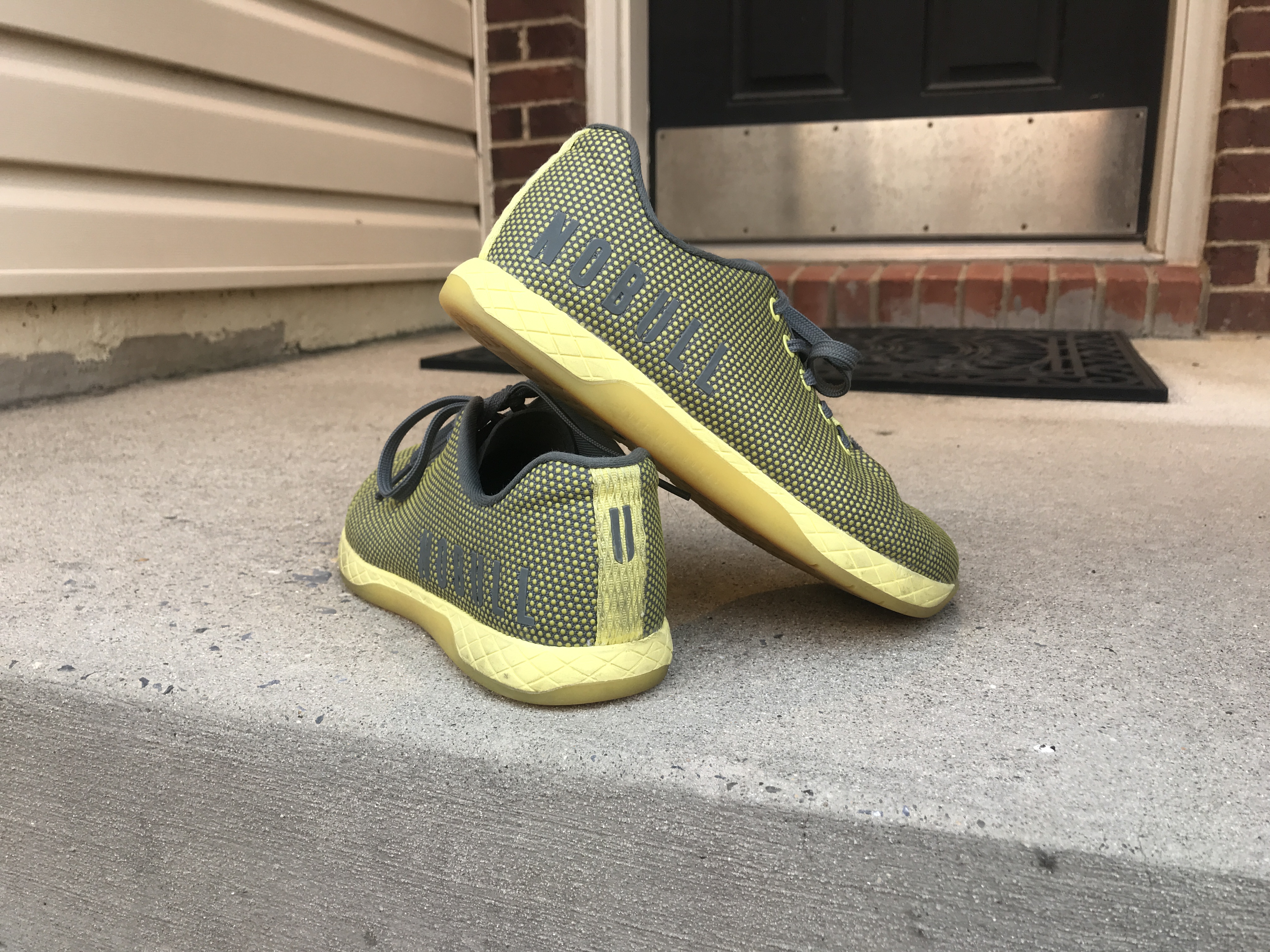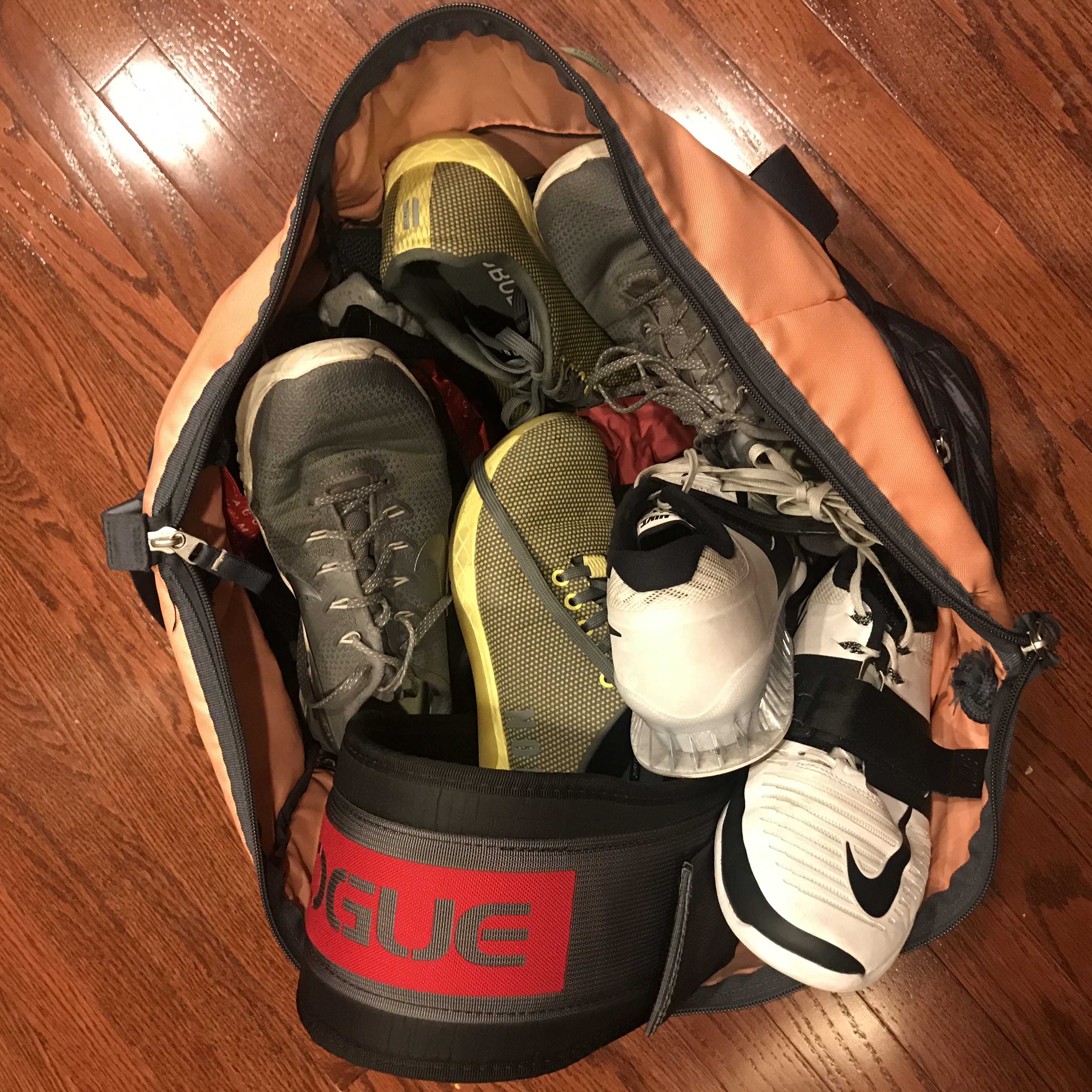Your Guide to Proper Workout Shoes
Since leaving my corporate job four years ago, my dress shoe collection has become pretty unimpressive. And I’ve never really been one to collect casual shoes. However, my workout shoe collection is a whole other story. Some might even find it a bit … fussy.
It’s not that I have so many workout shoes, or all the colors and fancy new styles. No, for me, it’s all about function — having the perfect shoe for the occasion is key. Heaven forbid that I start a workout without first considering which shoes would be most appropriate. Yeah, I’m not high maintenance at all.
All kidding aside though, not all athletic shoes are created equal — or with multiple purposes in mind. Sometimes it’s about function, sometimes it’s about support, and sometimes it’s a safety issue. For example, a few months ago, I wrote this post imploring FBGs everywhere to stop lifting in running shoes — for all the reasons mentioned above. In response, we received a ton of questions about which shoes I recommend for different workouts.
Well, your wish is my command! Here’s my own personal list of workout shoes, including info on why I love each of them for my specific fitness pursuits.

1. For Strictly Squatting and Olympic Lifting. I use Nike Romaleos. If you’re serious about your squats and/or Olympic lifting, get yourself a good pair of lifters. I’m not gonna lie to you, these are the most expensive pair of athletic shoes that I own, and they’re also the least versatile (meaning they aren’t useful for other things). But they are absolutely worth it. Weightlifting shoes have elevated heels which enhance your ability to get into the proper positions to leverage and control the barbell. They also have rock-solid base — usually made of hard plastic or wood, or combination of both — that provide a super stable surface without any give or rocking.

2. A Stable All-Purpose Shoe. I use No Bull Low Trainers. These are my go-to shoes for a wide range of workouts — there isn’t much these aren’t good at (more on that in a minute). In particular, these shoes really excel for deadlifting, lunging, wall balls, box jumps, step-ups, and — for those not yet ready to invest in a pair of lifters —these provide a pretty solid base for squatting. They have good traction, a nice flat bottom, and they are made of super durable fabric so they don’t get torn up from all the burpees and mountain climbers. They also have excellent lateral stability providing support for quick changes of direction. However, these are not my first choice for running and rope climbs, although they’ll certainly work.

3. A Nimble Cross-Trainer. I use Nike Metcon 4. Similar to the No Bull Trainers, these shoes are incredibly versatile. The biggest difference is that what the No Bulls provide in stiffness, the Metcons sacrifice in favor of flexibility. So while they aren’t as stable as the No Bulls (read: not as awesome when moving bigger weights quickly), these are much better for sprints, pushing sleds, climbing ropes, maneuvering, and running short distances. Still, ideally, I wouldn’t run more than a mile at a time in these since they are missing many of the key features that construct a solid running shoe.
4. For Straight-Up Running. I wear Brooks, but listen to me carefully: when it comes to running shoes, go get yourself fitted for a shoe at a local running specialty store. Please don’t take advice about the best running shoe from someone else or just grab the cheapest (or cutest) pair you find. Running shoes are highly variable and should be selected based on a complete evaluation of your unique feet, running gait, and strike patterns. End rant.

Long story short, my gym bag contains mostly shoes. But sorry, not sorry. Different workouts requires different shoes to maximize my performance, provide the right amount and type of support, and help keep me safe. This means that I have to make a choice about which shoe to wear based on the workout of the day.
My advice: if you need something stable, go with the No Bulls or something comparable. If you need something nimble, go with the Metcons or something along those lines. Save your running shoes for running and your lifters for lifting — which, by the way, also helps these more expensive shoes last longer.
Does this make me high maintenance? Maybe. But of all the things to be high maintenance about, I can’t think of anything more important than my health, fitness, and wellness. Don’t you agree?
How many pairs of shoes do you carry in your gym bag? —Alison


Comments
nice post thanks for sharing
Thank you for this one! I have been debating with my friends on the topic of training shoes for some time now. Finally my friend took my advice and bought a high quality running shoes and her training changed a lot, for better. A lot of people neglect this subject, but i think that the training shoes are really important for the whole training session, so we need to pick the right ones!
Comments are closed.